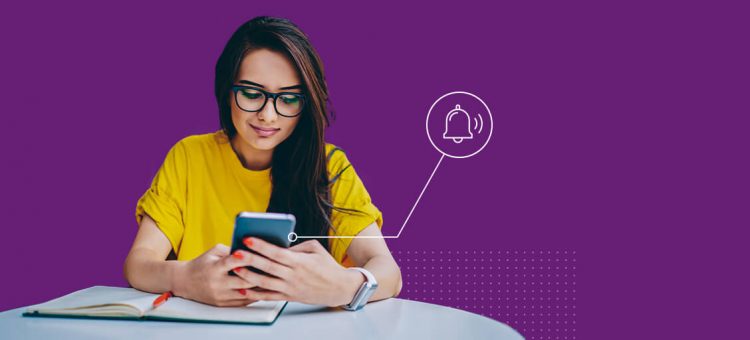As the impact of COVID-19 continues to be felt on a global scale, the need for organizations to get real-time feedback is imperative. Engaging in an open dialogue with employees and customers is especially useful as companies contend with health concerns, start reopening up businesses, and consider having employees return to shared workspaces.
At SurveyMonkey, our customers are using surveys to gain valuable insights from staff, customers, and constituents as they navigate these challenging times. For our Enterprise customers, Smart Notifications is one feature helping them do so.
With Smart Notifications, survey collectors can set conditions to trigger emails to themselves or delegated team members. For example, a company might set a Smart Notification to trigger an email whenever someone gives it a low customer satisfaction score, so they can take the appropriate action or let stakeholders know.
It’s important to note, Smart Notifications can be used together with Anonymous Response collector options. But for use cases where tracking respondent information is necessary to take action—for example, a dentist office conducting a pre-appointment screen of patients to inquire about health—the survey creator would need the respondent to be identifiable in order to follow up based on a response that might impact the health of others.
Real-time feedback
Too often, companies run into roadblocks that hinder distributing survey feedback effectively. However, setting up Smart Notifications can help to ensure survey data flows through an organization in a timely way and to the right stakeholder. Instead of logging into SurveyMonkey after a survey is set up, reading through responses, and manually curating feedback, administrators can operationalize the process, quickly deliver insights, and focus their attention on taking action—in real-time.
A McKinsey article highlights the importance of timely data in today’s high-stakes environment. It points out how senior executives, for example, can benefit from quick access to critical data to make unprecedented decisions in the short term and inform adjustments to medium and long-term business strategies.
WFH and returning to work
With a surge of remote workers in recent months, companies are adapting to make sure employees' needs are being met and their wellbeing, supported, from a distance. Here’s a common scenario where Smart Notifications are helping:
An HR manager builds a survey program to gauge how employees are feeling about returning to work while the risk of getting COVID-19 is still present. They may ask questions like, “what would make you more comfortable to return to the office?” for example. Another question might focus on returning when a vaccine is available or extending remote options. A Smart Notification setting might be set up to have HR respond to an employee who only feels comfortable working in an office when a vaccine is developed.
Monitoring community wellness
A Maryland-based sports company that hosts amateur and youth baseball tournaments, camps, and spring training programs is using SurveyMonkey technology to send self-assessments to parents and adult fans attending tournaments.
If respondents answer “yes” to any COVID-related questions that could impact community safety the company’s medical personnel are notified immediately via Smart Notifications and can follow up with respondents.
Checking in on the health of frontline workers
From healthcare organizations to essential businesses like grocers and drugstores, companies are using surveys to help keep frontline workers, and the people they come into contact with, safe. Employers can email or use SMS surveys to ask frontline employees about their health prior to coming into work. If an employee answers “yes” to a question that could impact their ability to return to work safely that would trigger a notification or an HR or wellness department to then respond appropriately and quickly.
A rise in telemedicine
According to a recent Harris poll conducted by Updox, a telehealth software company, nearly half of Americans (42%) have reported using telehealth services since the COVID-19 crisis began. With the increase in telehealth usage, the digitalization of patient feedback becomes even more important. For instance, after a telemedicine visit, a clinic can send patient feedback surveys via SMS and use Smart Notifications to trigger notifications for certain answers, like low satisfaction scores. For low scores, a notification would be sent out to patient experience teams to take action.
Check out our CAHPS® survey templates here to survey your patients or clients and then, benchmark your practice or plan.
In a new era where more health-related data is being collected, the ability to get feedback data in real-time is vital to help businesses take action responsibly and quickly. In addition, considering an enterprise-grade survey solution can help to ensure survey data is both accessible and secure.
Need help with your COVID-19 response plan? Learn more here. Or, get in touch with a team member to learn how SurveyMonkey Enterprise can help your organization. Get started.



